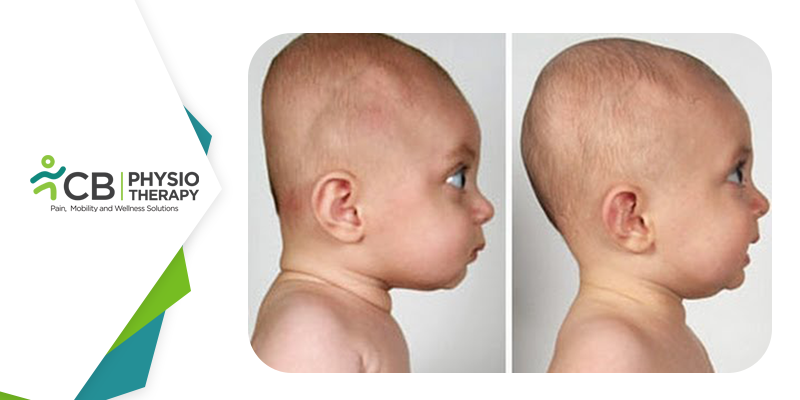In a few babies at the time of birth, the head doesn’t look like the charming cue ball which you would have imagined. Instead, it may appear cone-shaped, asymmetrical, or have a flat spot on one side. This can occur because of the vaginal delivery, in which a female has to push for a longer time. While there are various medical interventions that can change the shape of the newborn baby's head, Pediatric Physiotherapy is one of them. In this blog, we have mentioned a few exercises on how your baby's head shape may change during the initial months.
At the time of birth of your newborn. The Fontanelles or the soft or membrane-covered gaps between several bony plates making up the skull (head) are helped to shift and mold so it can fit through the birth canal. But while the female has to push the baby out through the birth canal, the head may appear cone-shaped or pointed. If your newborn’s head is misshapen down the birth canal, then it requires immediate treatment. Physiotherapy is one of the best-known interventions. The physiotherapist does a comprehensive physical examination, to check cone-shaped or flat spot changes and head unevenness. The physiotherapists guide and plan out a program for the treatment. Below mentioned are a few guidelines by our Physiotherapist:
Tummy Time:
Baby should get plenty of tummy time when he’s awake. 15 minutes of tummy time per day helps to strengthen the newborn baby's neck muscles, as well as develop motor skills that can help your baby to crawl. Slowly increasing tummy time to 30 minutes, 3 times a day is recommended.
Switching up baby's sleep position:
Baby's head can return to a more rounded shape by altering his position while he's feeding, asleep, and playing. Changing a baby's position is called counter-positioning or repositioning. It encourages the flattened areas of the newborn’s head to reshape naturally. For the baby's safety, always put him on his back to sleep. When the baby is put down on his back, the rounded side of his head should be in contact with the mattress, which helps keep one side of his head from flattening. In Moses' basket or crib, turn the head around regularly so that the newborn is not always looking in the same direction. If he's in a cot alternate the direction in which the baby is placed down to sleep.
Encouraging Side-lying:
Encourage the baby to lie on his side when possible. It is safe to do so when if he is wide awake or is sleeping during the day under supervision. Always keep an eye on the newborn when he is lying on his side, be sure that nothing happens to prevent him from breathing properly or obstructing his nose.
Holding the new-born:
When the newborn is awake, he should be kept out of the bouncer, stroller, car seat, or any other carrier as much as possible, instead carried in the arms, to relieve pressure on his head. The baby should be kept upright when awake to help relieve pressure on my baby's head from swings, carriers, and infant seats. The newborn must also be held with alternate arms at each feeding.
Helmets or bands:
In certain babies, cone-shaped or flat spot head doesn't resolve on its own, so it is recommended that the baby wears a special band or a medical helmet that applies gentle pressure to redirect the skull's growth. The baby wears the band or helmet all day and night -Along, taking it off only for bathing. For most babies with flat spots, physiotherapy should be started at around 5 or 6 months of age and usually lasts for about 3 months.
Stretching Exercises and Physical Therapy:
The newborn might have an asymmetrical head shape due to congenital torticollis, in such cases, your physiotherapist does some stretching and strengthening exercises to help lengthen and loosen the baby's neck muscles.
Horseshoe-shaped Pillows:
Horseshoe-shaped pillows may help make their baby's head round, though pillows are not recommended for babies under the age of one. Pillow, soft objects, and loose bedding can obstruct the infant's airway and cause a suffocation risk like sudden infant death syndrome (SID) also known as cot death.
A flat area does not affect the baby's developing brain. The head shape can be improved, and the earlier intervention is started the better it is. The younger the baby is, the easier it is to remould the head. Too much pressure can make him uncomfortable, or even hurt him.

